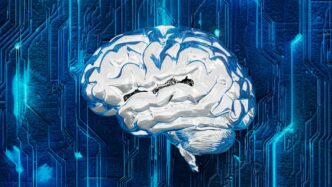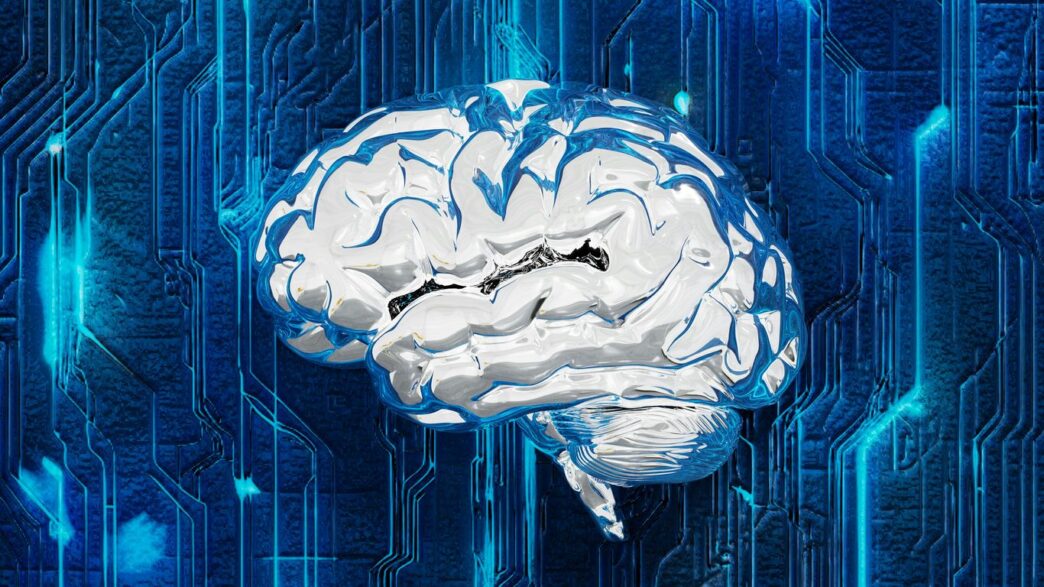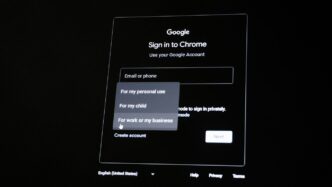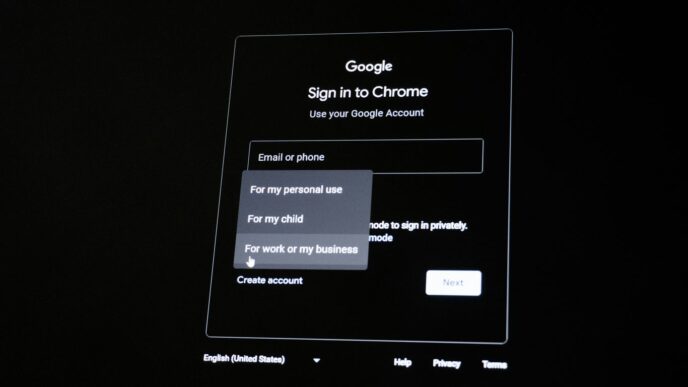Understanding Generative AI and LLMs for Dummies

What Is Generative Artificial Intelligence?
So, what exactly is this "generative AI" everyone’s talking about? Think of it like a super-smart creative assistant. Instead of just analyzing data or following pre-set rules, generative AI can actually create new things. This could be text, like stories or emails, images that look like photos, music, or even computer code. It’s like teaching a computer to be an artist or a writer, but on a massive scale.
The core idea is that it learns patterns from huge amounts of existing data and then uses those patterns to generate something entirely new. It’s not just copying; it’s remixing and inventing based on what it’s learned. This ability to produce novel content is what sets it apart from older types of AI.
Key Concepts About Generative Artificial Intelligence
To get a handle on generative AI, a few ideas are pretty important:
- Models: These are the brains behind the operation. Think of them as complex mathematical structures trained on data. Popular examples include Generative Adversarial Networks (GANs) and Variational Autoencoders (VAEs), though we’ll get to LLMs later.
- Training Data: This is the fuel. Generative AI models need vast amounts of data – text, images, sounds – to learn from. The quality and variety of this data directly impact what the AI can create.
- Prompts: This is how you talk to the AI. A prompt is essentially an instruction or a question you give the model to guide its creation. A good prompt can make a big difference in the output.
- Tokens: When dealing with text, AI models break down language into smaller pieces called tokens. These can be words, parts of words, or even punctuation. The model processes these tokens to understand and generate text.
What Makes Generative AI Unique?
What really makes generative AI stand out is its ability to produce. Older AI systems were often designed for specific tasks like classifying images or predicting numbers. Generative AI, on the other hand, is about creation. It can write a poem, design a logo, or compose a song. This creative output is a game-changer.
Another unique aspect is how it learns. Instead of being explicitly programmed for every possible scenario, it learns general patterns and relationships within data. This allows it to adapt and create in ways that might surprise even its creators. It’s this blend of learning and creation that’s making generative AI so exciting and, frankly, a bit mind-boggling.
Foundational Concepts in Artificial Intelligence
Before we get too deep into the fancy stuff like generative AI and large language models, it’s a good idea to get a handle on what Artificial Intelligence, or AI, actually is. Think of AI as the big umbrella term for making machines smart. It’s about teaching computers to do things that normally require human intelligence, like learning from experience, figuring out problems, and making decisions.
AI for Dummies: A Simple Explanation
At its heart, AI is about creating systems that can perceive their environment, reason about it, and take actions to achieve specific goals. You see AI all around you, even if you don’t always notice it. When your phone suggests the next word as you type, or when Netflix recommends a show you might like, that’s AI at work. It’s not magic; it’s just clever programming and a lot of data. These systems learn patterns from vast amounts of information to make these helpful suggestions or predictions.
The Difference Between AI and Generative AI
So, if AI is the big umbrella, what’s generative AI? Well, traditional AI often focuses on analyzing existing data or making predictions based on it. For example, an AI might predict if a customer will click on an ad. Generative AI, on the other hand, is all about creating something new. It doesn’t just analyze; it produces original content. This could be text, like the article you’re reading, or images, music, or even computer code. Generative AI is a specific type of AI that focuses on content creation.
Here’s a quick breakdown:
- Traditional AI: Analyzes, predicts, classifies. (e.g., spam filters, recommendation engines)
- Generative AI: Creates new content. (e.g., text generators, image creators)
Machine Learning and Deep Learning Distinctions
Now, how do these AI systems actually learn? That’s where Machine Learning (ML) and Deep Learning (DL) come in. Machine Learning is a subset of AI that allows systems to learn from data without being explicitly programmed for every single task. Instead of writing specific rules for every scenario, you feed the machine learning model data, and it learns the rules itself.
Deep Learning is a further subset of Machine Learning. It uses complex structures called neural networks, which are loosely inspired by the human brain, with many layers. These deep networks are particularly good at learning intricate patterns from massive datasets, which is why they are so effective for tasks like image recognition and natural language processing – the very things that power many generative AI models today.
Exploring Large Language Models (LLMs)
So, what exactly are these Large Language Models, or LLMs, that everyone’s talking about? Think of them as super-smart computer programs designed to understand and create human-like text. They’ve been fed an enormous amount of text data – books, articles, websites, you name it – which helps them learn the patterns, grammar, and even the subtle meanings in our language. It’s like they’ve read a huge chunk of the internet and can now talk about it.
What Are Large Language Models?
At their core, LLMs are a type of artificial intelligence. They’re built using complex structures called neural networks, and the most common architecture these days is something called a "Transformer." This Transformer design is pretty neat because it allows the model to look at all the words in a sentence at once, rather than processing them one by one. This makes them really good at understanding context and relationships between words, even if they’re far apart in a text.
How LLMs Work: Transformers Explained
The Transformer architecture is the secret sauce behind many modern LLMs. It has two main parts: an encoder and a decoder. The encoder reads and understands the input text you give it, and the decoder uses that understanding to generate the output text. Inside these parts are "attention mechanisms." These are what allow the model to weigh the importance of different words in the input when it’s trying to figure out what to say next. It’s like highlighting the most important parts of a sentence to grasp its meaning.
Here’s a simplified look at the key components:
- Encoder: Processes the input text, breaking it down and understanding its meaning.
- Decoder: Takes the encoder’s understanding and generates new text.
- Attention Mechanisms: Help the model focus on the most relevant parts of the input text.
Popular LLM Architectures: GPT and BERT
When people talk about LLMs, you’ll often hear names like GPT (Generative Pre-trained Transformer) and BERT (Bidirectional Encoder Representations from Transformers). These are two of the most well-known families of LLMs, each with its own strengths.
- GPT models (like those from OpenAI) are primarily known for their ability to generate text. They’re trained to predict the next word in a sequence, making them great for creative writing, answering questions, and generating summaries.
- BERT models (developed by Google) are excellent at understanding the context of words in a sentence. They look at words from both directions (left-to-right and right-to-left), which helps them grasp the nuances of language for tasks like sentiment analysis or identifying specific information within a text.
These different architectures allow LLMs to be used for a wide variety of tasks, from writing emails to helping programmers code.
Building and Training Generative AI Models
So, you’ve got a cool idea for a generative AI project. Awesome! But how do you actually get a model to do what you want? It’s not just about picking a tool and hitting ‘go’. There’s some real work involved, especially when it comes to the data and the training process itself.
The Importance of Data Quality and Preprocessing
Think of data as the food you feed your AI model. If you give it junk, you’re going to get junk output. This is probably the most important step, and honestly, it’s often overlooked. Garbage in, garbage out, right?
- Gathering Data: First, you need to collect the right kind of data. For a text generator, this means lots of text. For an image generator, it’s images. The more relevant and diverse your data, the better the model will learn.
- Cleaning Data: Real-world data is messy. You’ll find typos, incorrect information, duplicates, and irrelevant bits. You have to go through and clean all that up. This can be a tedious job, but it’s absolutely necessary.
- Formatting Data: Models often need data in a specific format. This might mean converting file types, structuring text into sentences, or resizing images. Getting this right makes the training process smoother.
Setting Up Training Environments
Once your data is prepped, you need a place to train your model. This isn’t usually your average laptop. You’ll likely need access to more powerful computing resources.
- Hardware: Training large models, especially deep learning ones, requires serious processing power. Graphics Processing Units (GPUs) are the go-to for this because they can handle the massive parallel computations needed. You might rent these from cloud providers like AWS, Google Cloud, or Azure.
- Software: You’ll need specific software libraries and frameworks. Popular choices include TensorFlow and PyTorch, which provide the tools to build and train neural networks. You’ll also need Python, the main programming language for AI.
- Cloud Platforms: Many developers use cloud platforms that offer pre-configured environments. These platforms often have managed services that simplify setting up and scaling your training infrastructure, taking a lot of the headache out of it.
Advanced Training Techniques and Hyperparameter Tuning
Just having the data and the environment isn’t the end of the story. You need to guide the model’s learning process. This is where things get a bit more technical.
- Training vs. Fine-tuning: You can train a model from scratch, which is a huge undertaking, or you can take a pre-trained model (one that’s already learned a lot from a massive dataset) and ‘fine-tune’ it on your specific data. For most projects, fine-tuning is way more practical and cost-effective. It’s like teaching an experienced chef a new recipe instead of teaching someone to cook from zero.
- Hyperparameter Tuning: Models have settings that aren’t learned from the data itself, but are set before training begins. These are called hyperparameters. Examples include the learning rate (how big the steps are when the model adjusts itself) or the number of layers in the network. Finding the right combination of these settings can make a big difference in how well your model performs. This often involves a lot of trial and error, trying different values and seeing what works best.
The goal is to find a balance where the model learns well from your data without just memorizing it, so it can generalize to new, unseen information.
Deploying and Utilizing Generative AI
So, you’ve built a cool generative AI model, maybe it writes poems or makes funny pictures. Awesome! But what happens next? Getting your creation out into the world and making it actually useful is a whole different ballgame. It’s not just about having the tech; it’s about making it work for people.
Strategies for Scalable Deployment
Think about how many people might use your AI. If it’s just you and a couple of friends, you can probably get away with a basic setup. But if you’re aiming for thousands, or even millions, of users, you need a plan. This means looking at things like cloud computing services – think AWS, Google Cloud, or Azure. They let you rent computing power and storage, so you don’t have to buy a supercomputer yourself. You’ll want to set up your model so it can handle lots of requests at once without slowing down. This often involves using something called "containerization," like Docker, which packages your AI and all its needs into a neat little box that can run anywhere. Then there’s "load balancing," which is like a traffic cop for your AI, directing requests to different servers so no single one gets overwhelmed.
Integrating Generative AI into Applications
This is where your AI actually starts doing things for people. Most likely, you’ll be using something called an "API" (Application Programming Interface). Think of an API as a menu at a restaurant. Your application (like a website or a mobile app) orders what it needs from the AI (like "write a product description" or "generate an image of a cat wearing a hat"), and the API delivers it. You’ll need to decide what kinds of requests your AI can handle and how it should respond. For example, if you’re building a chatbot, the API needs to understand user questions and send back sensible answers. If you’re creating art, the API needs to take user prompts and return images. It’s all about making the AI talk nicely with whatever else is running.
Ongoing Maintenance and Optimization
Deploying your AI isn’t the end; it’s really just the beginning. AI models aren’t static. They need to be looked after. This means:
- Monitoring Performance: Keep an eye on how fast your AI is responding and if it’s making mistakes. Are users getting the results they expect?
- Updating Data: The world changes, and your AI might need new information to stay relevant. This could mean retraining parts of the model or updating the data it uses.
- Security Checks: Just like any software, AI can have security holes. You need to make sure it’s protected from people trying to mess with it or steal information.
- Cost Management: Running AI, especially large models, can get expensive. You’ll want to find ways to make it run more efficiently to save money.
Regularly checking and tweaking your deployed AI is key to keeping it useful and reliable over time. It’s a bit like maintaining a car – you wouldn’t just drive it forever without an oil change, right? Your AI needs that same kind of care.
Practical Applications and Case Studies
So, you’ve got a handle on what generative AI and LLMs are, and maybe even how they’re built. Now, let’s get down to what you can actually do with them. It’s not just about theory; it’s about making these tools work for you. Think of it like learning to cook – you can read all the recipes, but until you actually get in the kitchen and start chopping, it’s all just words on a page.
Building a Text Generation Model
Imagine you need to write a lot of product descriptions, or maybe you want to brainstorm marketing taglines. Instead of staring at a blank screen, you can use an LLM to help. You’d start by feeding it some examples of the kind of text you want. This could be existing descriptions, articles, or even just a few sentences outlining the topic. The model then learns the style, tone, and key information. The better your examples, the better the output. For instance, if you’re creating descriptions for handmade pottery, you’d give it examples that talk about the materials, the crafting process, and the unique artistic qualities. Then, you can prompt it with a new product’s details, and it’ll generate a description for you. You might still need to tweak it a bit, but it’s a huge head start.
Creating Generative Art
This is where things get really visual. Generative art uses AI to create images, music, or even videos from text prompts. It’s like having a super-talented artist on call. You describe what you want – say, "a serene landscape with a lone tree under a starry night sky, in the style of Van Gogh" – and the AI goes to work. The results can be stunningly original. Different models have different strengths. Some are great at photorealism, others excel at abstract styles. It’s a lot of trial and error, playing with your prompts to get closer to your vision. You might find yourself refining keywords, adjusting parameters like "chaos" or "stylization," and iterating until you get something you love. It’s a fascinating way to explore creativity without needing traditional artistic skills.
Developing a Chatbot
Chatbots are probably one of the most common uses of LLMs you’ll encounter. Think about customer service bots on websites or virtual assistants on your phone. Building one involves training an LLM on a specific set of information, like your company’s FAQs, product manuals, or support documents. This is often done using a technique called Retrieval-Augmented Generation (RAG). Instead of the LLM just making things up, it first looks up relevant information from your provided data and then uses that to formulate an answer. This makes the chatbot much more accurate and reliable. Here’s a simplified look at how it works:
- User Asks a Question: The user types or speaks a query.
- Information Retrieval: The system searches a knowledge base (like your company’s documents) for relevant information.
- Contextual Prompting: The retrieved information is combined with the user’s question to create a detailed prompt for the LLM.
- LLM Generates Response: The LLM uses the prompt to craft a helpful and accurate answer.
- Response to User: The generated answer is presented to the user.
This approach means your chatbot can provide specific, up-to-date answers based on your data, not just general knowledge. It’s a powerful way to automate support and provide instant information.
Ethical Considerations and Future Trends
Bias, Fairness, and Transparency in AI
So, we’ve talked a lot about what generative AI and LLMs can do, which is pretty amazing. But with all this power comes a big responsibility, right? One of the main things people worry about is bias. Think about it: these models learn from tons of text and data from the internet. If that data has unfairness or stereotypes baked in, the AI can pick that up and repeat it. This means an LLM might accidentally say something biased or unfair, which is a real problem. We need to be super careful about the data we feed these things and how we check their outputs.
It’s not just about bias, though. There’s also the question of fairness. Does the AI treat everyone equally? And transparency – can we actually understand why an AI made a certain decision or generated a particular piece of text? Right now, that’s often a black box, and that can be unsettling.
Here are some ways folks are trying to tackle these issues:
- Better Data: Trying to use more balanced and representative data when training models. It’s like trying to give the AI a more well-rounded education.
- Checking the Output: Developing ways to review what the AI produces to catch any unfair or biased content before it gets out there.
- Explaining the ‘Why’: Researching methods to make AI decisions more understandable, even if it’s just a little bit.
Emerging Trends in Generative AI
Looking ahead, things are moving fast. We’re seeing LLMs get even bigger and, hopefully, smarter. But it’s not just about size. People are working on making them more efficient, so they don’t need as much computing power. Imagine AI that can learn new things without having to be completely retrained from scratch – that’s called continual learning, and it’s a big deal.
Another exciting area is multimodal AI. This is where AI can understand and work with different types of information, not just text. Think about AI that can look at a picture and describe it, or listen to audio and write a summary. It’s like giving AI more senses.
Preparing for Future Developments in LLMs
So, what does all this mean for us? Well, generative AI and LLMs are going to keep changing. They could be used in ways we haven’t even thought of yet. It’s important to stay curious and keep learning about this technology. As it gets more advanced, we’ll need to think about how to use it responsibly. This means being aware of the potential downsides, like misuse or privacy concerns, and working together to find solutions. It’s a bit like learning to drive a really fast car – you need to know the rules of the road and be careful. The future is exciting, but it requires us to be thoughtful and proactive.
Wrapping It Up
So, we’ve gone through a lot, from what generative AI and LLMs actually are to how they work and what they can do. It might seem like a lot at first, but hopefully, it’s a bit clearer now. These tools are changing fast, and understanding the basics is a good start for anyone curious about them. Think of this as just the first step. There’s always more to learn as this tech keeps growing. Keep exploring, keep asking questions, and see where it takes you.














